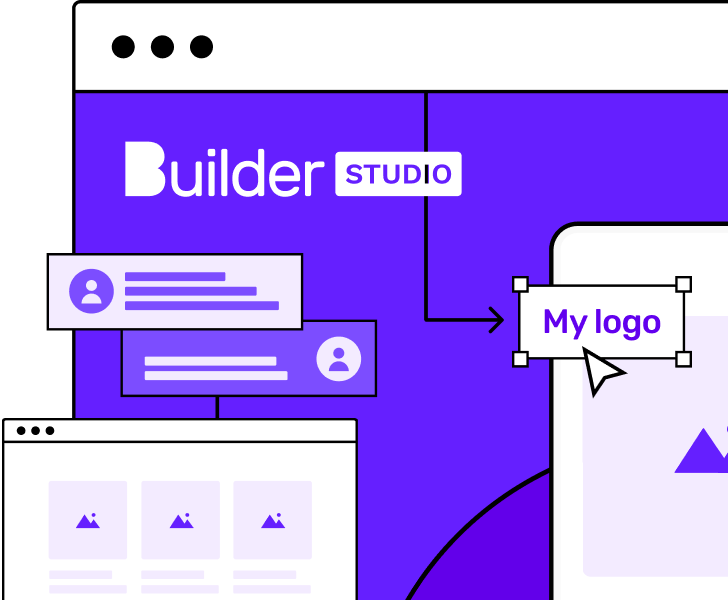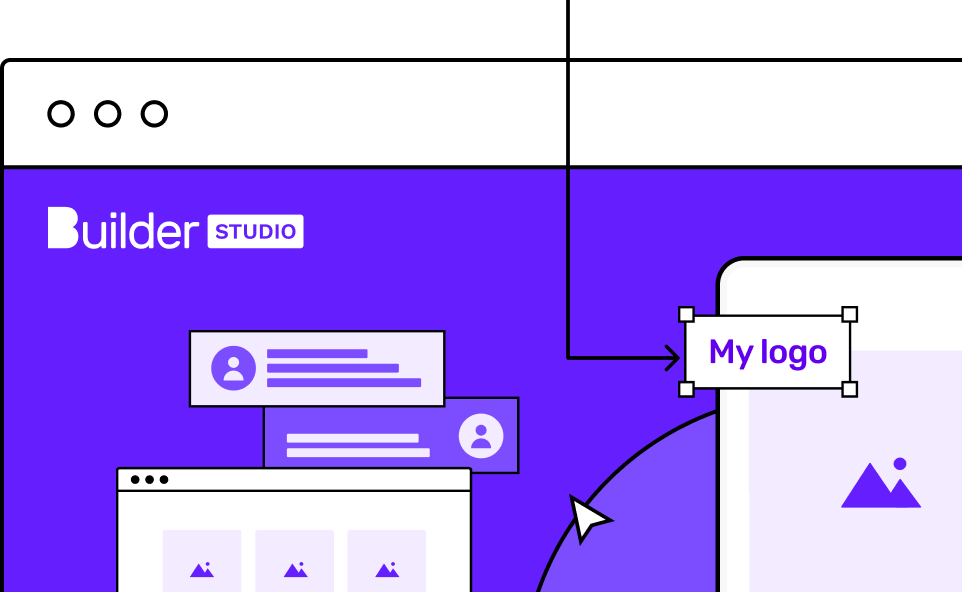
Checklists can be a useful exercise to avoid overlooking necessary tasks. They focus the mind. Keep your team on the same page. And, if you’re like me, checking off completed tasks is extremely satisfying in and of itself.
Checklists are a good thing. And when you’re launching a new project, product or business, a comprehensive marketing checklist is crucial. The hard part is knowing what that list should include. Of course, copious amounts of advice can be found with a simple Google search, but sorting through all that advice can be, well, daunting to say the least. With that in mind, we’ve compiled some of the best advice straight from the minds of those who know best. The result is a 25-step marketing checklist of things to keep in mind for your next big launch.
#1 Does it work?
“Quality is more important than quantity. One home run is much better than two doubles.” Steve Jobs
First things first: Does your product work? Is it ready for launch? Have you taken the time to anticipate and test for any possible weaknesses? Yes, it seems obvious, but inadequate testing has been the downfall of countless products. Don’t let one of them be yours. Test. Test. Then test again. There will inevitably be failures along the way. Take time up front to prevent as many as you can.
#2 Why you?
“You need to turn over every rock and open every door to learn your industry. This process never ends.” Mark Cuban
Why are you special? Why should people choose you? What are all the missteps of your competitors, and how does your product do it better? If you don’t know all of the reasons why your customers are better off with you, then you’ll have a very hard time convincing them that they are.
#3 Who’s buying?
“I know there's a farmer out there somewhere who never wants a PC and that's fine with me.” Bill Gates
Don’t just identify your target audience. Learn everything you can about them.
Who are they?
Ethnicity, nationality, number of children, education levels. The more you know about who they are, the more effectively you can communicate with them and, ultimately, persuade them to give you a try.
Where are they?
Not just physically, which is obviously important for a brick and mortar enterprise, but where are they online? What social media do they frequent? Where can they be reached and where do they go to buy? If you can’t find your audience, you can’t sell to them.
How do they buy?
Is their primary marketplace online? Do they prefer to see and touch and hold things before buying? Is the way that they buy your particular type of product different from the way they purchase other products? If you don’t make the purchasing process as comfortable and familiar as possible for them, they’re probably going to look elsewhere when it comes time to buy.
Why do they buy?
Does your target audience need a product that appeals to a particular set of values or beliefs? Or are they only motivated by quality or utility? Is price the most important factor in their decision process? You have to know why your audience buys before you can tell them why your product is the best.
#4 Talk to the press
"Sometimes, it doesn’t hurt to ask. I have been in the news many times just by calling on the news channel and asking them about featuring my business." Lori Cheek, Founder of Cheekd
We’ll talk about the press release later, but too often, when launching a product, we simply distribute our press release and wait for the journalists to come to us.
Don’t wait.
Go find them.
Find out who the key journalists are. Find out who reaches your target audience. Call them. Visit them. We’ll also talk about the ‘elevator pitch’ a bit later; this is one time to have it ready to go. Journalists are busy. If you can’t tell them quickly why you’re worth their time and effort, they’re not likely to spend much time listening to you.
#5 Facilitate feedback
“Your most unhappy customers are your greatest source of learning.” Bill Gates
It’s true that the vast majority of customers who bother to provide feedback are most likely unsatisfied in some way. But ignoring them doesn’t make their dissatisfaction go away, it only feeds it. And you’ll feed it more if you haven’t provided an easily accessible, easy to operate way for those customers to lodge their complaints (or compliments). Preferably you’ve provided multiple channels for customer feedback. Oh, and nothing is more frustrating than the feeling that your feedback is just disappearing into some black hole of despair. Make it someone’s job to read user feedback. Make it their job to respond to it. Make it their job to make things right. That’s how you turn a negative into a positive and hold onto a customer that you otherwise might have lost.
#6 Define success
“Being the richest man in the cemetery doesn’t matter to me. Going to bed at night saying we’ve done something wonderful...that’s what matters to me.” Steve Jobs
If you don’t know exactly what your goals are, you’ll never know whether you’ve met them. You won’t know what success looks like. You won’t know what you’re doing wrong. You won’t know what you’re doing right. Whether it’s users reached, units sold, whatever it is, you need to set goals that can be objectively measured. Only then will you know whether you’re headed in the right direction.
#7 Product documentation
“There's no law against stupid – I learned that a long time ago.” Mark Cuban
No, we’re not calling your users stupid. It’s easy, though to blame the user when your meticulously designed, intuitive, fool-proof product turns out not to be quite so intuitive as you thought. Owner’s manuals. FAQs. Online tutorials. Phone support. Make sure, before you launch, that you’ve got everything in place to help users successfully get the most out of your product. The fact that they may be “doing it wrong” doesn’t take away from the fact that, for them, your product doesn’t work. And that’s what they’ll tell their friends… right before asking for a refund.
#8 Support team
“An exceptional company is the one that gets all the little details right. And the people out on the front line, they know when things are not going right, and they know when things need to be improved. And if you listen to them, you can soon improve all those niggly things, which turns an average company into an exceptional company.” Richard Branson
Along with documentation goes the customer support team. Make sure they’re in place. Make sure they know their stuff. Make sure they’re fully versed in the intricacies of your product. They know how it works. They know how to make it work when it doesn’t. Most importantly, they know how to make things right when users are frustrated. People will forgive a lot when they feel they’re being heard and treated with respect.
Oh, and talk to your support team. As Richard Branson mentioned above, “they know when things are not going right, and they know when things need to be improved.”
#9 Personal support
"Selling is not a pushy, winner-takes-all, macho act. It is an empathy-led, process-driven, and knowledge-intensive discipline. Because, in the end, people buy from people." Subroto Bagchi, co-founder of Mindtree
One more word about support: When you launch your product, join your support team on the front lines. Give your first customers your personal attention. Not only will it generate good will with early adopters, but you’ll be surprised what talking with actual users will teach you.
#10 Marketing
“If you can't make it good, at least make it look good.” Bill Gates
Of course Marketing is important. It goes without saying. So, this isn’t about the need to have marketing. It’s about the need to be sure that your marketing team is kept informed. Are they up to speed on what they’ll need to know to create the targeted, persuasive, intelligent materials you’ll need to successfully market your product? Do they know and understand the user personas? Do they know, and have they studied your biggest competitors? Do they fully understand the product and how it works and its value proposition? An uninformed marketing team is an ineffective marketing team. An ineffective marketing team is a thing you can’t afford.
#11 Elevator pitch
“The purpose of an elevator pitch is to describe a situation or solution so compelling that the person you're with wants to hear more even after the elevator ride is over.” Seth Godin
So, here it is. We mentioned it earlier. The elevator pitch. What is it?
The elevator pitch is a tool you keep with you at all times. It comes out, not just in elevators, but any time you meet or are introduced to someone or are in line with someone at the local Starbucks. The point is, you only have 5 seconds to explain what you do and why they should care. If you stumble, if you’re unclear, if you miss an important point, you’ve missed your opportunity. And when that elevator door opens, or they turn to talk to someone else, or they pay for their latte and leave, you’ve possibly lost an investor or a partner or, at the very least, a customer.
So, plan your speech. Write it down. Memorize it. Practice it. Know it backwards and forwards. You never know when you’ll need it, and, like any tool, it needs to be kept razor sharp.
#12 A place for everyone and everyone in their place
“Are we limiting our success by not mastering the art of delegation? …. it’s simply a matter of preparation meeting opportunity.” Oprah Winfrey
Entrepreneurs like to get things done. And what’s the best way to get something done? To do it yourself. You can’t do it all yourself, though. Don’t even try. If you do, both you and your project will suffer. You’ve built a team for a reason. Put them to work. Make sure every team member has an assignment. Make sure they understand it. And make sure they’re in place and ready to go when it’s time to launch. You can’t do it yourself. Repeat after me: “You can’t do it yourself.”
Delegate.
#13 Future PR
“It takes 20 years to build a reputation and five minutes to ruin it. If you think about that, you’ll do things differently.” Warren Buffett
In the all-consuming frenzy that comes with launching a new product, it’s easy to focus on the here and now. It’s easy to fixate on the launch. You want everything to go perfectly. It’s easy to save next steps for later. One thing you don’t want to put off is a plan for PR that extends beyond the initial launch. A wildly successful launch can be easily nullified when you suddenly realize you need to say something and fire off an ill-advised, hastily written press release that alienates half of your new users.
Plan what’s next, with alternative plans for a variety of outcomes.
#14 Tracking results
“What gets measured gets done.” Peter Drucker
Defining success is only part of the battle. No matter that you have the most brilliant, comprehensive picture of what constitutes success. That picture means nothing if you have no reliable means of measuring whether you’ve achieved it. Once you’ve identified the metrics that define your success, make sure you know how to measure and track your results.
#15 What’s it worth?
“Perhaps the reason price is all your customers care about is because you haven’t given them anything else to care about.” Seth Godin
Pricing is more than just arbitrarily slapping a number on your product that you think people might be willing to pay. It’s not as simple as finding out how people would rate your product or how willing they are to use it. Pricing is all about value. You need to know not only how much users like your product or its features, but also how willing they are to pay for it.
You can probably think of a few products that sounded amazing until you saw the price tag. The newest iPad with all the bells and whistles would certainly be rated as highly desirable by a wide range of users, and Apple’s target audience will buy it. Many, though, will look at the price tag and realize that the much cheaper Kindle Fire meets their needs just fine.
Don’t just coast confidently on how much users like your product. Find out what it’s actually worth to them, or you’ll find yourself unpleasantly surprised when nobody’s buying.
#16 What if people like it?
“By failing to prepare, you are preparing to fail.” Benjamin Franklin
You spend a lot of time preparing for and trying to prevent negative occurrences and outcomes. What if reviews are bad? What if your pricing is too high? What if this or that or some other thing you never even dreamed of tanks your sales? How do you prevent or turn around those worst-case scenarios? But have you also taken the time to prepare yourself for the best-case scenario?
What if people buy it?
If your most optimistic sales projections turn out to be wildly conservative, will you be ready to increase production? Will you be able to meet shipping demands? Will your infrastructure be able to handle an unexpected influx of users?
Don’t focus so much on preventing negative outcomes that you’re caught flat-footed by unexpected success.
#17 Word of mouth
Word-of-mouth marketing is a crucial component of organic growth for startups and one of the primary ways that Weebly has grown to over 15 million customers.” David Rusenko
When you’re bringing a new product to market, you naturally spend a lot of time and effort in determining how best to… well… market it. In the midst of all that planning on how to get the word out, though, don’t overlook the power of good, old-fashioned word of mouth. Make sure you, your employees, your partners, your family, and anybody else you might come into contact with are sharing the details with everyone they know and encouraging those contacts to do likewise. Whether it’s social media, fliers distributed at the local coffee shop or just chatting up their neighbor in the checkout line, word of mouth is too often overlooked as a powerful driver of awareness and sales.
#18 The media plan
“In this rapidly changing media environment, business transformations need to be closely linked to communications strategies.” Nancy Dubuc
Many will write their press release and only then bother to think about whom to send it to.
This is bad.
Do your research. Identify your target(s). Find out which media they use and plan how best to leverage the strengths of each one. Plan where to send your press release. Plan when to send your press release. Make contact personally, if you believe a certain medium to be particularly crucial. Only after all this, should you start to actually write your press releases. (more on that below)
#19 Write a killer press release
“Never forget that you only have one opportunity to make a first impression – with investors, with customers, with PR, and with marketing.” Natalie Massenet
If you’re going to get the word out, you’re going to need a press release. Make sure it’s a good one.
Journalists are inundated every day with generic, boring press releases that simply lay out basic facts and provide them with contact info. If they’re lucky, there might be a bland quote that could have been said by anyone. If yours is just another one of these, it won’t get a second look.
Your press release is your chance to personally tell the story of your product. Make it a story worth hearing. Make your message unique. Tell the story of your product’s genesis. Talk about exactly how your product solves a specific problem for your target audience. Learn about the types of media you’re targeting and make sure you’re answering the questions that their audiences are interested in.
First impressions: You only get one.
#20 Manufacturing
“I don't spend my time pontificating about high-concept things; I spend my time solving engineering and manufacturing problems.” Elon Musk
No matter what else you do right, you can’t sell anything if you run out of product. Before you launch, check, re-check and check again that your manufacturing plan is in place and fully functional. Make sure suppliers and partners are a go to provide any parts or assistance the manufacturer may need. And, as noted above, make sure provisions are in place to accommodate for unexpected success.
#21 Order fulfillment
“Every product you have ever loved was a compromise from the ideal vision of its creators to the realities of shipping on time, on budget, and on price point. Anyone who has ever manufactured a physical product that had to be on the shelves for Christmas shopping knows how painful these choices can be.” Jay Samit
You’ve manufactured it. Now, can you ship it from A to B cheaply and efficiently? Will your shipper be able to handle whatever volume might be thrown at them? Today, when consumers want something, they want it now. If your product gets stuck in transit, they’ll look elsewhere in order to get what they need.
#22 Touch points
“From the store windows, the store touch-points, the website, social media, or a magazine, it has to be one pure customer experience, not just to gain market share but to gain mind share.” Angela Ahrendts
Identify every customer and prospect touchpoint. Make sure each one is thoroughly stress-tested. Whether it’s a visit to your website, walking into a physical sales room, billing or providing customer feedback, there are many ways in which customers might come into contact with you or your product. Each and every interaction with your users should be as pleasant and stress-free as you can possibly make it.
#23 Media tracking
“Part of how we decide how we allocate our media is we have fairly sophisticated ways of measuring our return on marketing spend, which helps us best analyze the most effective way and medium in which to spend our marketing dollars.” Steve Easterbrook
Establishing a media plan and putting it into action is just the beginning. Media tracking is how you know that all of that planning is working in your favor.
Media tracking is simply the ongoing monitoring (watching, reading, listening, etc.) of media sources. It’s generally used to track editorial content, but it can also extend to advertising and social media. Media tracking gives you valuable insight into your industry, into the content you’ve distributed and into your brand. It can help you know whether all of that planning is working in your favor or if you need to make adjustments. Quite simply, it’s the difference between knowing and not knowing. And when you’re launching a new product, it’s much better to know.
#24 The sales team
“There's no lotion or potion that will make sales faster and easier for you – unless your potion is hard work.” Jeffrey Gitomer
As with the marketing team, it’s vital to be sure that your entire sales team is fully versed in your product. Do they know its key value propositions? Can they explain those value propositions to the target audience? Can they answer common questions? Can they address common concerns? Can they use the product and conduct effective demos? If you can’t answer yes to all of these questions, you’re product’s not ready to launch.
#25 Know the ‘whys’
“It's just not easy to explain to someone else what you don't understand yourself.” Wislawa Szymborska
Finally, in relation to all of the decisions and considerations involved in launching a new product, always make sure you yourself know the 'whys'. It’s not enough to simply make the tough decisions, you also need to know why you made them. You need to be able to explain them. You need to be able to defend them. From pricing to shipping to the timing of the launch, if you can’t easily articulate your reasoning, then you don’t really understand it yourself.
Knowing the ‘whys’ won’t guarantee that you’ve made the right decisions, of course, but on the chance that something does go wrong post-launch, you’ll be much better equipped to change course and keep your ship sailing toward success.









